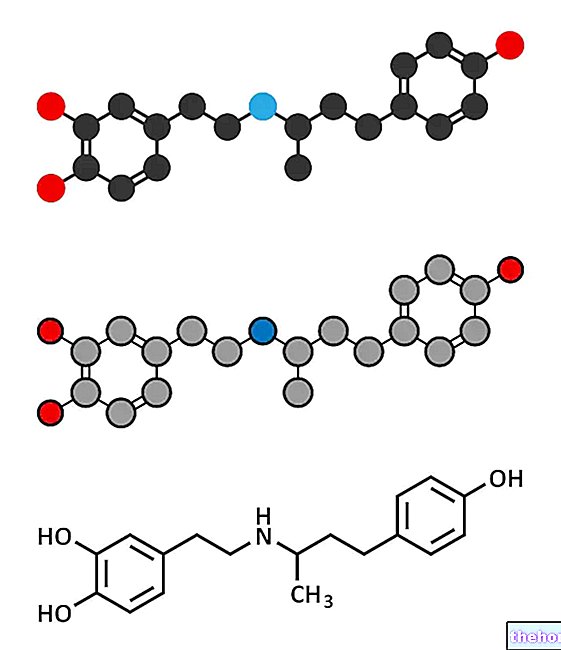MODULA ® is a drug based on calcium polycarbofil
THERAPEUTIC GROUP: Laxatives - Bulking laxatives

Indications MODULA ® Calcium Polycarbofil
MODULA ® is indicated for the short-term treatment of occasional constipation and non-specific diarrhea.
Mechanism of action MODULA ® Polycarbofil Calcium
The calcium polycarbofil contained in MODULA ® is an important adaptogen, which can be used effectively both in the treatment of occasional constipation and diarrhea.
Its action is essentially due to the ability to absorb water in the intestinal lumen, for a quantity equal to 60-120 times its weight.
Introduced orally, following the replacement of calcium ions with hydrogen ions in the stomach, the calcium polycarbophilic acid is reworked into polycarbophilic acid, thus reaching the intestine, where it hydrates, significantly increasing its volume and facilitating evacuation.
The ability to bind water, present for example in watery stools, allows the active principle to be used effectively also for the treatment of diarrheal episodes.
Studies carried out and clinical efficacy
CALCIUM POLYCARABOFIL AND IRRITABLE COLON SYNDROME
Curr Treat Options Gastroenterol. 2006 Jul; 9: 314-23.
Current gut-directed therapies for irritable bowel syndrome.
Chang HY, Kelly EC, Lembo AJ.
Irritable bowel syndrome is a very common pathological condition characterized by gastrointestinal disturbances, dyspepsia, diarrhea, constipation, and alternating diarrhea and constipation. Studies have shown how polycarbophil calcium can be particularly effective especially in the treatment of the form characterized by constipation, ensuring a regression of symptoms.
2. CALCIUM POLYCARABOFIL AND NUTRIENT ABSORPTION
Biol Pharm Bull. 1996 May; 19: 771-3.
Effect of polycarbophil on the absorption of nutrients.
Yamada T, Nagata O, Tamai I, Tsuji A.
Although in vitro the ability of this active ingredient to inhibit the absorption of carbohydrate and amino acid derivatives such as phenylalanine has been observed, other studies have rapidly denied these experimental evidences, arguing that calcium polycarbophil does not interfere with the absorption of nutrients at all.
3. CALCIUM POLICARBOFIL AND Diarrhea
Minerva Gastroenterol Dietol. 1993 Sep; 39: 139-43.
Clinical evaluation of calcium-polycarbophil in the treatment of non-specific diarrhea
Gizzi G, Villani V, Rubinetto MP, Cianci M, La Froscia A, Barbara L.
This bulk laxative has also been found to be particularly useful in the treatment of diarrhea episodes, thanks to the ability to absorb water from watery stools. Studies, in fact, show how the administration of this drug can guarantee a reduction in painful symptoms, and an increase in the consistency of stools in patients with non-specific diarrhea.
Method of use and dosage
MODULA ® tablets for oral use of 0.652 gr of calcium polycarbophil; chewable tablets of 0.625 g of polycarbophyl calcium; granules for oral use of 37.4 gr of calcium polycarbophil / 100gr: the range of application used for the treatment of constipation provides for an "intake ranging from two tablets, taken once a day, to two tablets taken four times a day. It is preferable to start with the minimum dosage, and then eventually - also according to the observed result - correct the doses.
To increase the effectiveness of MODULA ® it is useful to drink plenty of water during the day, while to avoid digestive side effects it is advisable not to go to bed immediately after taking it.
Any alterations in dosage or therapeutic protocol should be determined only by the physician.
Warnings MODULA ® Calcium Polycarbofil
MODULA ® should be taken in case of real need and exclusively in conditions of occasional constipation, for very limited periods of time.
Prolonged treatment with this medicine could in fact compromise the patient's state of health (especially if heart disease), following a reduction in blood levels of potassium and dehydration. These effects are also accompanied by a reduction in the efficacy of the treatment, with a progressive reduction of intestinal peristalsis up to atony.
Medical supervision is strongly recommended in patients with hypertension, cardiovascular diseases and endocrine-metabolic disorders, as well as in pediatric patients.
MODULA ® absolutely does not interfere with the normal ability to drive vehicles and use machines.
PREGNANCY AND BREASTFEEDING
At the moment there are no studies that can demonstrate the total safety of calcium polycarbophil on the health of the fetus and the newborn, when taken during pregnancy or during lactation; however, pharmacokinetic evidence shows that the active ingredient is absolutely not absorbed from the gastrointestinal tract. .
In light of these data, during pregnancy it would be advisable to resort to the use of MODULA ® only in case of real need and under close medical supervision.
Interactions
MODULA ®, like other laxatives, is able to significantly increase the intestinal transit speed, altering the normal absorption profile of nutrients and active ingredients. Therefore, the intake of laxatives should occur at least two hours after the ingestion of drugs.
Contraindications MODULA ® Calcium Polycarbofil
MODULA ® is contraindicated in case of hypersensitivity to the active substance or to one of its excipients.
The use of laxatives is also contraindicated in case of intense abdominal pain, nausea, vomiting, diarrhea, gastro-intestinal affections, even with an acute course, bedridden patients, dehydration and in case of intestinal obstruction.
Undesirable Effects - Side Effects
The most evident side effects are associated with abdominal distension induced by the increase in fecal mass; therefore, even if only occasionally, abdominal pain, cramps and colic, flatulence and intestinal obstructions have been observed.
Prolonged use of laxatives is instead associated with the appearance of electrolyte imbalances, with consequent dehydration, intestinal atony and chronic constipation.
Note
MODULA ® is an OTC drug, therefore it can be sold freely without the need for a medical prescription.
The information on MODULA ® Policarbofil Calcico published on this page may be out of date or incomplete. For a correct use of this information, see the Disclaimer and useful information page.




























